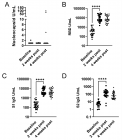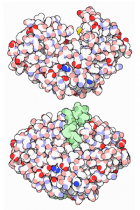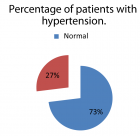Table of Contents
Prevalence of performance-enhancing drug use among gym members in Saudi Arabia, Riyadh: A cross-sectional survey
Published on: 27th December, 2022
Context: Illicit and performance-enhancing drug (PED) use is prevalent among athletes.Aims: We examine the prevalence of PED use among amateur athletes, identify the common characteristics and associated risk factors for illicit PED use and measure the perception and awareness among gym members regarding the safety and effects of illicit drug use.Settings and design: This cross-sectional study was conducted among adult male and female gym center attendees in Riyadh, Saudi Arabia.Methods and materials: Self-administered Arabic and English questionnaires were used for data collection. Statistical analysis used: SPSS version 26 was used to perform t- and chi-square tests.Results: This study included 379 participants, of whom 59.6% were male, 52.8% were between 26 and 35 years of age, and a majority of the participants had normal (47.5%) or overweight (40.9%) body mass index. Our study revealed a high prevalence (48.5%) of PED use among gym athletes in Riyadh, Saudi Arabia. Moreover, the true prevalence might have been higher due to the possibility of underreporting by some participants because of the sensitivity of the subject. Protein powder was the most commonly used type of PED. Of all the participants, 22.3% reported anabolic androgenic steroid use. Side effects of PEDs were observed in 19% of the study participants.Conclusion: The results of this study should encourage public health researchers and health advocates to design and implement behavioral interventions to educate the public on the benefits, risks, and contraindications of dietary supplements used by athletes to enhance their body performance.Key messages• Performance-enhancing drug (PED) use is prevalent among both professional and amateur athletes.• Gym athletes in Riyadh, Saudi Arabia, report increasing PED use.• Side effects and negative health impacts are associated with illicit PED use.• Misinformation on the risks and benefits of PEDs is a major public health concern.• More efforts should be implemented in public awareness about the risk of using PED targeting younger populations.
The application of therapeutic exercise as a means of rehabilitation in a patient diagnosed with MS, Case Study
Published on: 5th December, 2022
Multiple Sclerosis (MS) is a chronic and often progressive condition that affects the Central Nervous System (CNS) and as a result has negative consequences on a person’s physical condition, functioning, mood, and Activities of Daily Living (ADL) [1].
Pain and culture - on cultural communications of suffering
Published on: 29th November, 2022
The impact of culture on the communication of pain becomes visible in a comparative perspective when individuals with two different cultures meet.Regardless of the physiological cause, it is through lived experience, in social life, that it is decided how, where, when and for whom pain is to be communicated. Age and gender, situation and context as well as the type of pain are essential ingredients in communication. The communication is always adapted to expectations from those present, their own experiences of pain and the specific circumstances, the cause of the pain. The impact of culture on the communication of pain becomes visible in a comparative perspective when individuals with two different cultures meet.
The modified star excursion balance test for the detection of the risk of injury in elite handball female players
Published on: 25th November, 2022
Background: Elite handball female players are at high risk of injury to the lower limbs. The modified Star Excursion Balance Test (mSEBT) is efficient in detecting players with a risk of injury. However, performed once before the season, the mSEBT cannot determine with precision when the injury will occur. Purpose: The objective of the study was to investigate if a repeated measure of mSEBT across the season would help in identifying with precision the period at risk of injury for each player.Methods: Eleven elite female handball players took part in the study. The mSEBT was measured weekly for 25 weeks and the injuries were recorded. Composite Scores (CS) and distances on each axis were computed for both legs of each player. The 94% cut-off on the composite score and the 4 cm difference between the right and left leg on the anteroposterior axis (ANT) was investigated for each player.Results: Five players reported injury. The 94% cut-off on the CS and the 4 cm difference on ANT were not significant indicators of risk of injury in our study. However, for each injured player, a drop in the composite score was noticed the week before the injury.Conclusion: We propose the drop of CS as an indicator for the detection of the risk of injury in a follow-up of elite athletes using repeated mSEBT. This indicator allows the detection of injury a week before it occurs. Further work is needed to confirm, investigate and validate this indicator.
Effect of crossfit-trainings on the heart rate of adolescent judokas
Published on: 23rd November, 2022
Background: One of the types of the complex control system is medico-biological, which includes a set of methods and measures aimed at assessing the health, and functional state of the athlete’s body, taking into account the reaction of his systems to various loads. CrossFit is a constantly varied and high-intensity functional training program in which with increasing the training load, the pulse rate increases.The context and purpose of the study: The research was aimed to find out the frequency of heart rate of adolescent judokas in the presence of CrossFit-trainings in the process of physical fitness, for which a pedagogical scientific experiment was held at the youth sports and cultural training center after V. Zakaryan (Hrazdan city). From the groups of 10-12-year-olds practicing judo at the sports school, one experimental and control group was formed, each with 10 athletes. During CrossFit-trainings “Tabata”, “AMRAP”, “21-15-9” and “WOD” methods were mainly used. Athletes’ pulse rate was measured manually at the wrist before training, during training, and immediately after training in order to control the athletes’ feelings toward the training load.Results: In the September-June period, with the implementation of the CrossFit-training program, the heart rate of athletes before training was on average 102,2 bpm, during training 158,3 bpm and immediately after training – 157,8 bpm.Conclusion: The indicators obtained as a result of the research correspond to the norms suggested in literature sources.
Improving “quality of life” through exercise and proper nutrition
Published on: 2nd November, 2022
In line with what is defined by W.H.O. (World Health Organization) the objective of the work is to observe and define the interconnection between a healthy lifestyle and the quality of life perceived by people.For this purpose, 30 healthy subjects, who had never practiced sports at a competitive level, were recruited. All individuals were evaluated at T0 and T1 through clinical evaluation and specific functional tests to define the psycho-physical well-being of the person. For three months they were followed with a personalized diet. Subjects were divided into two randomized groups: group A called experimental that followed the protocol for the duration of the study, and group B said evaluation group that performed only evaluations at the same time as group A. both groups were evaluated twice, the first immediately after the last training session, the second evaluation was performed after 30 days from the first.The objective of the project was to analyze, after three months, the cognitive changes in memory and concentration skills, stress experienced at work or study, and psycho-physical well-being perceived by interested parties. The data collected during the evaluations showed that the interconnection between a healthy lifestyle and the quality of life perceived by people is evident.

HSPI: We're glad you're here. Please click "create a new Query" if you are a new visitor to our website and need further information from us.
If you are already a member of our network and need to keep track of any developments regarding a question you have already submitted, click "take me to my Query."
























































































































































